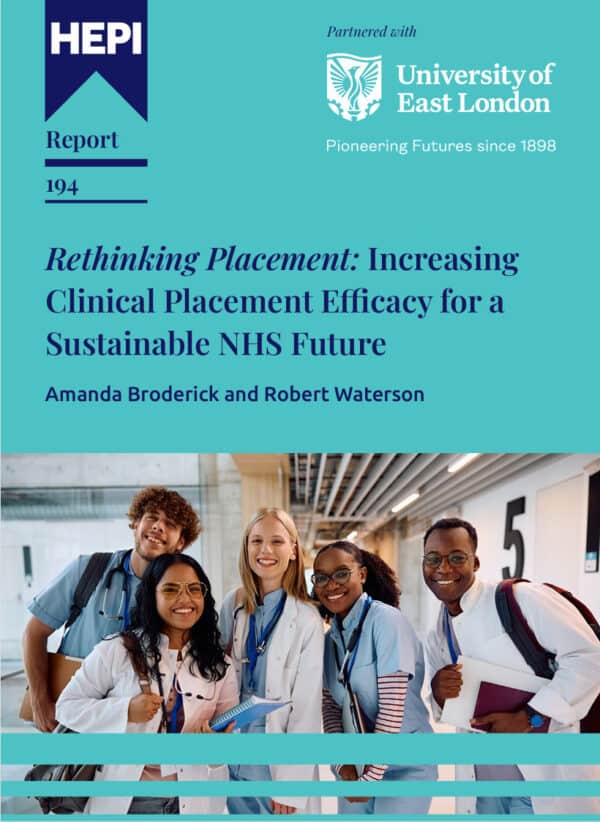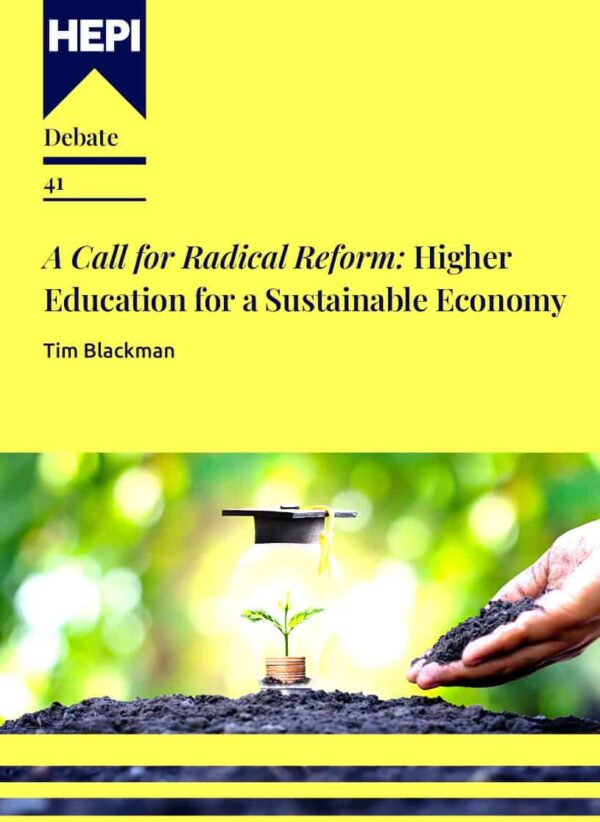Life at a modern university in 2025: the changing nature of study
This blog was kindly authored by Rachel Hewitt, Chief Executive, MillionPlus, the Association of Modern Universities
Every year, surveys like HEPI’s Student Academic Experience Survey offer a snapshot of university life. But behind the charts and statistics is a changing story about what higher education looks like, especially at modern universities. These institutions are showing that studying in 2025 rarely follows a single, conventional route.
Modern universities have long been known for their openness and ties to local communities. Now, they are also shaping a very different kind of student journey—one that does not always follow the traditional three-year residential degree. Instead, it reflects the realities of a diverse student body: people working while studying, commuting from home, caring for family, or building new careers later in life.
Beyond the “traditional” student
For many students at modern universities, higher education is less about stepping away from life for three years and more about weaving learning into a busy, complicated existence. As the Student Academic Experience Survey shows, almost half (45%) of modern university students are in paid employment—often out of necessity, not choice. Many are parents, carers, or career-changers. For these students, study isn’t a bubble; it’s one delicate strand in a web of responsibilities.
For some, this results in a very different kind of campus life: less time spent living in halls, more commuting (40% travel over 10 miles) and a stronger pull between work, family and academic priorities.
New models of participation
While financial pressures for students and wider society remain acute—38% of students who need work can’t find it, and 30% say cost-of-living concerns affect their ability to focus—modern universities are adapting their teaching and support models. Many now offer blended delivery, intensive block teaching, alongside established flexible provision such as degree apprenticeships and part-time study. These approaches allow students to earn, care, and live at home while progressing towards qualifications.
Supporting non-traditional students
This is a student population that remains deeply committed to learning. Despite all the pressures, modern university students show up, participate, and persist. Approaching a fifth of students has caring responsibilities, comfortably higher than their peers at older institutions. Some 40% report that their tutors actively encourage class discussion and help them explore personal areas of interest. They value that their feedback is accessible and constructive, helping them improve and stay on track.
While their circumstances may be more complex, their commitment to learning is strong. These students also place a high value on being heard and report a sense of belonging, often shaped by feeling that their opinions matter and that support services are there when needed. These aren’t just “nice to haves”—they’re essential in a system where so many are juggling competing demands.
Their experience may look different from the “classic” university model, but it is no less valid.
For institutions, the challenge is that this is all happening against a backdrop of unsustainable finances, with their resources being stretched increasingly thinly.
The financial strain on universities
While much of the conversation around student experience rightly focuses on individuals, universities across the sector are also under growing pressure, the reasons for which are by now well established. Modern universities typically receive less research funding and fewer philanthropic donations than many of their older counterparts, with their international student income potentially next on the chopping block if the government follows through on its proposed levy.
They also face higher staff costs, with significant increases in pensions cost (recent changes to the Teachers’ Pension Scheme which modern universities are bound to offer are estimated to cost the sector £125 million per year) and this year are facing an 11% fall in Office for Students recurrent grants, compared to 5% at pre-92s. This is coupled with recent defunding of Level 7 apprenticeships, provision into which many modern universities had put significant investment to support the skills system. Yet they educate a high proportion of students from disadvantaged or underrepresented backgrounds, often with greater support needs.
Balancing quality education with constrained budgets is becoming increasingly unsustainable. The financial model that underpins higher education in the UK is coming apart at the seams. These universities are doing vital work—widening participation, supporting local economies, and offering first and second chances—but they’re being asked to do more with less.
The case for a new funding model
The current system is simply not fit for purpose. If modern universities are to continue serving their students effectively—and if those students are to thrive—there needs to be a shift in how higher education is funded. This could mean more targeted government support, reforms to tuition fee and maintenance structures, or increased investment in student support services. In order to maintain a world-leading higher education sector, vital to help meet the government’s stated goals, there must be a clear strategy for higher education from Westminster and Holyrood. The sector waits in hope for the government’s promised HE reform package.
Without change, inequality will be further entrenched and institutions that play a crucial role in social mobility will be immeasurably lessened. In 2025, with the support of their institutions, modern university students are doing everything they can to succeed. It’s time the system worked just as hard for them.







Comments
Ronald Barnett says:
Excellent blog, if I may say so. So many should read it, and in all sorts of quarters. I fear that many who should now better still have in their minds a full-time student living away from their parents’ home, dedicating themselves to their study programmes and having leisure time in student clubs and societies. That wasn’t even the case 50 years ago (!) and has now become a fiction.
It would be very interesting to build on this article and for HEPI to put in hand a serious research project identifying the ways in which, the extent to which, and the institutions in which changes are being made to accommodate to ‘the new UK student’ and what it is to ‘be’ a student as the mid C21 approaches.
One change lies in the very concept of ‘student’. Now, ‘student’ has become a discursive marker for a fluid set of intermingling spaces across higher education, the economy, the polity, family, culture, Nature, learning, society, knowledge, digitalisation, the law and self (ie, ‘student’ is implicated ecologically, across multiple ecosystems – immodestly, see 2 of my more recent books).
We now need serious empirical research to understand all of this, not least as it takes different shapes across socio-economic class, gender, ethnicity, religion,
Reply
Ronald Barnett says:
Excellent blog, if I may say so. So many should read it, and in all sorts of quarters. I fear that many who should now better still have in their minds a full-time student living away from their parents’ home, dedicating themselves to their study programmes and having leisure time in student clubs and societies. That wasn’t even the case 50 years ago (!) and has now become a fiction.
It would be very interesting to build on this article and for HEPI to put in hand a serious research project identifying the ways in which, the extent to which, and the institutions in which changes are being made to accommodate to ‘the new UK student’ and what it is to ‘be’ a student as the mid C21 approaches.
One change lies in the very concept of ‘student’. Now, ‘student’ has become a discursive marker for a fluid set of intermingling spaces across higher education, the economy, the polity, family, culture, Nature, learning, society, knowledge, digitalisation, the law and self (ie, ‘student’ is implicated ecologically, across multiple ecosystems – immodestly, see 2 of my more recent books).
We now need serious empirical research to understand all of this, not least as it takes different shapes across socio-economic class, gender, ethnicity, religion, geography, nation (int students), discipline and so on.
Ron Barnett
Reply
David Palfreyman says:
Agree with Ron – a very interesting & informative blog. Only one minor point to make – yes, the post-92s are now hit hard by the cost of TPS (just as for a while were the ‘old’ Us by the hike in USS employer contributions) but the fact that the post-92s get less R-income is not a financial disadvantage given the inadequate overheads recovered on R-activity and hence ‘doing’ R costs the U by way of it needing to supply a hefty subsidy (usually from hope-for earnings from the tuition fees for int’l students but now one fears also from the fees for UK UGs). But, of course, that R activity is what drives the global rankings and a high ranking is what attracts those lucrative int/l students…
Reply
Martin Evans says:
The cost of pensions is very much swings and roundabouts as Teachers Pensions has increased to 28.68% whereas USS has reduced not forgetting that USS was on the verge of a very high percentage for employers. Meanwhile LGPS has reduced and continues to reduce. But the member numbers for TPS are more than those for USS & LGPS. The increase in member contributions in Teachers Pensions from Tier 2 upwards from April 2025 may potentially mitigate this.
Reply
Albert Wright says:
Many institutions face rising costs and falling incomes. In the private sector, you can try increasing prices but this is more difficult for Universities.
Perhaps Universities should be open for more days per year and hours per day and deliver degrees in 2 years not 3.
Reply
Add comment